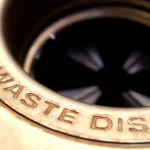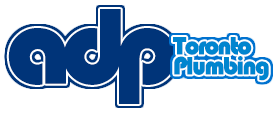In the City of Toronto, home flooding is far from an unknown issue, over the past few years more and more homes are being damaged due to this problem. Many homeowners are uncertain as to why their home has flooding; someplace the blame on the lack of proper municipal infrastructure, while others understand that sometimes you cannot be fully prepared for extreme events. The truth is that there are a number of reasons for basement flooding and in many cases, the responsibility is on both parties. Let’s find out a little more about Toronto’s most common causes of basement flooding.
How Your Home Connects To The Sewer System
There are two separate sewer systems in the City of Toronto; the wastewater system and the stormwater system.
Wastewater system
The wastewater (aka sanitary sewer) system handles all liquid and solid materials that are flushed down toilets, down the drains of bathtubs, and down sinks. All of this water is transported to Toronto’s Wastewater Treatment Plants which then remove chemicals, solids, and other undesirable contaminants which are then fed directly into Lake Ontario. Household plumbing connects only to this sewer system. In some older homes the weeping tile system would be connected to the wastewater system, in newer homes this is no longer the case and rather a sump pump will discharge water to surface away from the foundation.
Stormwater system
The stormwater (aka storm sewer) system handles all water associated with rain and/or ice melt. The water is collected via catch basins located in the gutter on most roadways, and also many homes have roof drains (aka downspouts) which direct water underground to a connection with the storm sewer. In some older homes, the weeping tile system would also be connected to the storm sewer rather than the wastewater sewer.
Sewer sizing
The sanitary sewers were sized in accordance with the needs of the nearby contributing homes, businesses, and local industry in an effort to provide adequate service with an allowance of extraneous water. The storm sewer was created with the intention of providing adequate capacity for average frequent rainfall, with the intention that some areas on the surface would be able to handle the remainder in the event of a larger rainfall than the sewer would be able to accommodate. During the planning of the sewer systems, it was impossible to plan for every worst-case scenario, but under normal circumstances, the sewer systems are more than adequate.
Common Problems Associated With Basement Flooding
There are a few main causes of basement floods in the City of Toronto:
Extreme weather events
It should come as no surprise to anyone that’s lived in the city for a few years that every once in awhile an extreme rainfall event occurs. Some speculate this is a modern occurrence perhaps associated with climate change phenomena, but regardless, the City of Toronto has its share of intense rainfall. These events have a very good chance of overwhelming the systems in place that would normally accommodate a standard rainfall.
Structural problems within the sewer
There are a number of structural problems present within sewer systems that either end up causing reduced flow and/or blockages, the most common of these problems include:
- Cracked sewer pipes
- Defective drain pipe connections
- Obstructions caused by root masses
- Encrustation at Joints
- Broken sewer drain pipes
- Debris buildup
- Protruding lateral pipe connections
- Grease buildup
Surface flooding events
Excess stormwater entering into the wastewater sewer and/or sewer system. This is commonly caused by flooded streets as a result of poor surface drainages such as blocked catch basin or low road points.
Excess stormwater entering the sanitary sewer
The leading cause of stormwater entering into sanitary sewers is via foundation drains (aka weeping tiles); illegal cross-connections between the sewers; water infiltration via maintenance holes, broken pipes & pipe connections; and cracks in the sewer system. Additionally, water can flow into the sanitary sewer via maintenance holes in low areas and stormwater-flooded basements via the floor drain.
When It Rains
The normal rainfall that Toronto experiences is handled by the storm sewer with typically no troubles. Extreme rainfall events are intended to overflow into nearby outlets such as ponds, creeks, and Lake Ontario. However, there are areas with low points (areas which have low surface heights, creating valleys essentially) which during extreme rainfall and with storm sewers overwhelmed causes nearby homes to flood which them allows excess surface water is able to flow into the sanitary sewer creating further problems for homes in the vicinity.
Inadequate Flood Protection
In homes that do not have adequate basement flooding protection, this can easily lead to a flood. In other areas, in even more extreme circumstances basement flooding protections will not help when ponding is capable of flowing directly into the home (via basement windows for example). In these circumstances, stormwater that has flooded the basements of the homes in this area flows directly from the basement into the floor drain and contributes to the flooding of the sanitary sewer system.
As a result of the sanitary sewer being overwhelmed, homes that are nearby and not subject to low area ponding can experience sanitary sewer backing up into their home if they do not have adequate basement flooding protection installed, such as a backwater valve.
Hire Professional Plumbers To Protect Your Home
The best way to protect your home from flooding problems is to hire a licensed plumbing contractor that understands the interaction of your home, the municipal sewer systems, and your specific location. Not all homes require the same protection and a licensed plumber will make sure that you are not only protected by all plumbing installations, drain installations, or associated repairs are conducted in a manner that does not put your home, or the homes of others, at risk.
Additionally, a licensed Toronto plumber will be able to aid you in claiming the many rebates which are commonly available – it is within the City’s best interests to ensure that your home is protected from the dangers of basement flooding.






